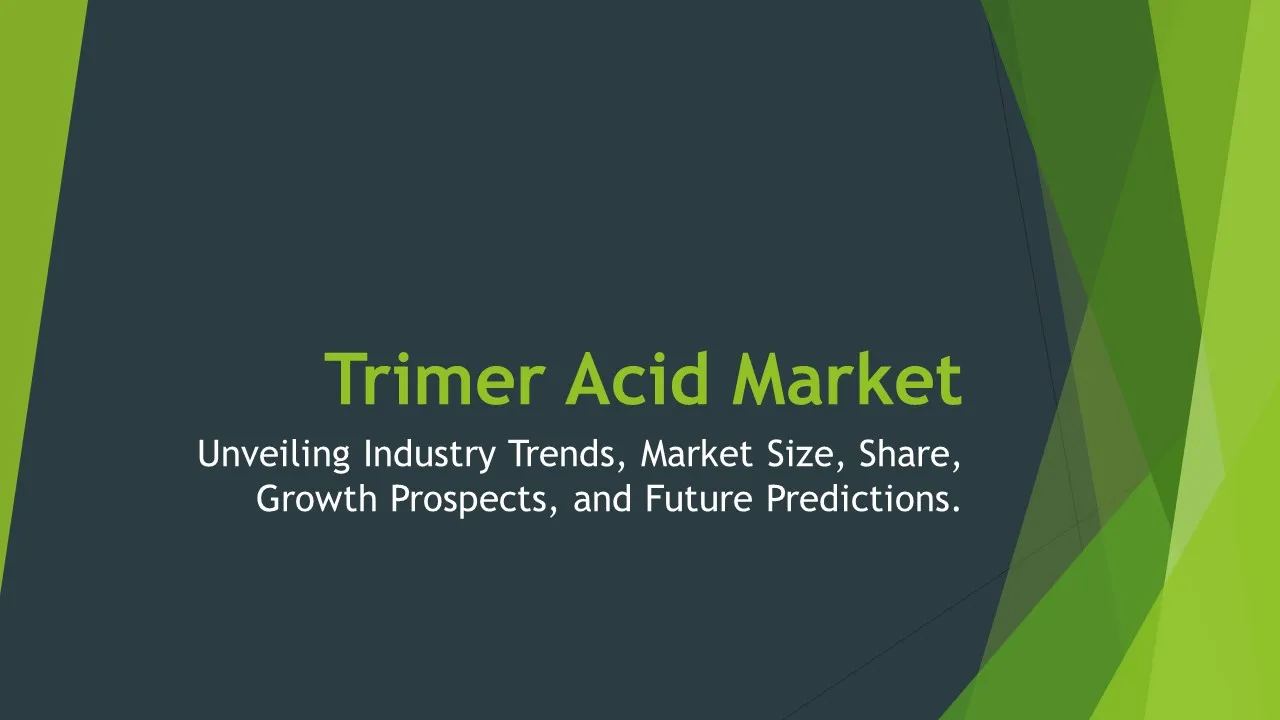Propylene Glycol Monomethyl Ether Sales
Propylene Glycol Monomethyl Ether Market Segments - by Product Type (Purity 99%, Purity 98%, Purity 97%, Purity 96%, Purity 95%), Application (Paints & Coatings, Cleaners, Chemical Intermediates, Electronics, Pharmaceuticals), Distribution Channel (Direct Sales, Distributor Sales, Online Retail), Ingredient Type (Industrial Grade, Pharmaceutical Grade, Electronic Grade, Others), and Region (North America, Europe, Asia Pacific, Latin America, Middle East & Africa) - Global Industry Analysis, Growth, Share, Size, Trends, and Forecast 2025-2035
- Report Preview
- Table Of Content
- Segments
- Methodology
Propylene Glycol Monomethyl Ether Sales Market Outlook
The global Propylene Glycol Monomethyl Ether (PGME) market was valued at approximately USD 2.5 billion in 2023 and is projected to reach USD 4.1 billion by 2035, growing at a compound annual growth rate (CAGR) of around 5.1% during the forecast period. This growth can be attributed to the increasing demand for PGME in various applications, including paints and coatings, electronics, and pharmaceuticals. The expanding construction industry, particularly in emerging economies, is significantly driving the demand for high-performance solvents and additives, which include PGME. Furthermore, the shift towards environmentally friendly products and sustainable practices in industries such as paints and coatings is promoting the use of PGME due to its non-toxic nature. Advances in manufacturing technologies and enhanced production capabilities are also expected to positively influence the market's growth trajectory.
Growth Factor of the Market
The growth of the Propylene Glycol Monomethyl Ether market is primarily driven by its versatile applications across multiple sectors. As industries continue to focus on eco-friendly and low-VOC (volatile organic compound) products, PGME is gaining popularity due to its compliance with environmental regulations. Additionally, the increased usage of PGME in the formulation of water-based paints and coatings is pushing the market forward. The pharmaceutical sector is also witnessing a rise in the use of PGME as a solvent in drug formulation, which further contributes to the market growth. Moreover, the rapid expansion of the electronics industry, particularly in Asia-Pacific, is creating significant demand for PGME as a cleaning agent for electronic components. This trend is supported by the growing need for high-purity solvents, which PGME can effectively fulfill. Lastly, the rising disposable income and changing lifestyle of consumers are leading to a higher demand for personal care and household cleaning products that utilize PGME.
Key Highlights of the Market
- The PGME market is projected to grow at a CAGR of 5.1% from 2025 to 2035.
- Increasing demand for environmentally friendly and low-VOC solvents.
- Significant applications in paints, coatings, pharmaceuticals, and electronics.
- Expansion of the construction and automotive sectors is driving growth.
- Growing demand for high-purity PGME in various industrial applications.
By Product Type
Purity 99%:
PGME with a purity level of 99% is widely used in the pharmaceutical industry as a solvent for drug formulation. Its high purity ensures that it meets stringent regulatory requirements, making it an ideal choice for high-value applications where quality and efficacy are paramount. This segment is expected to experience steady growth due to the increasing demand for pharmaceutical products that utilize advanced solvents. Additionally, the high-purity grade is also prominent in the electronics industry, where it is employed in the cleaning of sensitive components, thereby enhancing its market appeal.
Purity 98%:
PGME with a purity of 98% is commonly used in the production of paints and coatings. It serves as an effective solvent that aids in achieving the desired viscosity and flow characteristics of the paint. The demand for this product type is driven by the ongoing growth in the construction and automotive sectors, where high-quality finishes are increasingly required. This product segment is expected to witness robust growth as manufacturers continue to innovate in their formulations to meet the evolving standards for performance and environmental safety.
Purity 97%:
This grade of PGME is generally utilized in commercial cleaning products and household cleaners. The increasing consumer focus on hygiene and cleanliness, particularly in the wake of global health concerns, has propelled demand for effective cleaning agents that are also safe for use. As a result, the market for PGME at this purity level is experiencing a surge, with manufacturers looking to enhance their product lines with formulations that contain lower VOCs and are environmentally friendly. The versatility of this grade allows its application across a wide range of cleaning solutions.
Purity 96%:
PGME with a purity of 96% finds application in chemical intermediates and is often used in the formulation of various industrial products. This product type is favored for its cost-effectiveness and suitability for less critical applications where ultra-high purity is not a requisite. The growth in the chemical industry and the need for efficient solvents in the production of intermediates are contributing factors to the rising demand for this grade of PGME, particularly in developing economies where industrial growth is on the rise.
Purity 95%:
The 95% purity grade of PGME is often utilized in various applications, including the formulation of inks and dyes. Market demand for this product type is largely driven by the expanding printing and packaging industry, where high-quality inks are essential for brand visibility and product presentation. Additionally, this purity level is also used in smaller niche applications, further supporting its market position. As industries continue to innovate and expand their product offerings, the need for PGME at this purity level is expected to grow steadily.
By Application
Paints & Coatings:
The paints and coatings industry is one of the largest consumers of Propylene Glycol Monomethyl Ether. PGME serves as a solvent in both water-based and solvent-based formulations, providing properties such as enhanced adhesion, improved flow, and reduced VOC emissions. The increasing demand for high-performance coatings in construction, automotive, and industrial applications is driving the growth of this segment. As manufacturers seek to comply with stringent environmental regulations, they are increasingly turning to PGME as a solution to achieve the desired performance characteristics while minimizing environmental impact.
Cleaners:
In the cleaning product sector, PGME is recognized for its excellent solvency properties and ability to dissolve a wide range of contaminants. It is commonly used in formulations for household and industrial cleaning agents. The heightened emphasis on cleanliness, especially post-pandemic, has spurred demand for effective cleaning solutions that incorporate PGME, leading to a notable increase in this application segment. Furthermore, the shift toward biodegradable and eco-friendly cleaning products is further enhancing the growth prospects of PGME in this market.
Chemical Intermediates:
PGME is utilized in the production of various chemical intermediates, serving as a solvent in the synthesis of multiple industrial chemicals. Its ability to act as a versatile solvent makes it a preferred choice in chemical manufacturing processes. The steady growth of the chemicals sector, particularly in emerging markets, is projected to bolster the demand for PGME used in this application. This trend is supported by increased investments in chemical manufacturing facilities and the need for effective solvents in the production workflows.
Electronics:
The electronics industry utilizes PGME primarily as a cleaning agent for sensitive electronic components. Its low toxicity and excellent solvency characteristics make it suitable for use in cleaning agents that are safe for both the environment and the end-users. The rapid growth of the electronics sector, particularly in regions like Asia-Pacific, is driving the demand for PGME in this application. As technology evolves and the complexity of electronic devices increases, the need for effective cleaning solutions that include high-purity solvents like PGME is expected to rise.
Pharmaceuticals:
In the pharmaceutical sector, PGME is employed as a solvent in the formulation of drugs, providing necessary properties that enhance drug stability and efficacy. Its use in this industry is critical given the stringent regulatory standards surrounding pharmaceutical products. The rising global healthcare expenditures and the increasing demand for advanced therapeutics are contributing to the growth of this segment. As pharmaceutical companies continue to innovate and develop new formulations, the demand for reliable solvents like PGME is anticipated to grow significantly.
By Distribution Channel
Direct Sales:
Direct sales are a crucial distribution channel for PGME, as manufacturers often prefer to establish direct relationships with large-scale buyers, such as industrial manufacturers and pharmaceutical companies. This channel allows for better negotiation on pricing and terms, along with a more streamlined supply chain. The growth in this segment is supported by the increasing volume of transactions in the industrial sector, where bulk purchases are standard. As industries continue to scale, the effectiveness of direct sales in catering to high-volume requirements is likely to bolster this distribution method.
Distributor Sales:
Distributor sales play a significant role in the PGME market, allowing manufacturers to reach a broader customer base through established distribution networks. Distributors often provide additional services such as technical support and inventory management, which can be beneficial for end-users. The trend toward consolidation in the distribution sector, along with the increasing demand for PGME across various industries, is expected to enhance the role of distributors in facilitating market access and product availability.
Online Retail:
The online retail segment for PGME is gaining traction as more customers turn to e-commerce platforms for their purchasing needs. This distribution channel provides easy access to a wide variety of PGME products, along with the convenience of home delivery and often competitive pricing. The rapid growth of e-commerce, driven by changing consumer preferences and increased digital penetration, is likely to further boost this channel. Additionally, the ability to compare products and read customer reviews online enhances the buying experience, encouraging more customers to choose online retail as their preferred purchasing method.
By Ingredient Type
Industrial Grade:
Industrial-grade PGME is primarily used for manufacturing purposes across various industries, including paints, coatings, and cleaning products. This grade is characterized by its cost-effectiveness and versatility, making it a preferred choice for applications where ultra-high purity is not critical. The steady growth of manufacturing activities globally, particularly in emerging markets, is contributing to the increasing demand for industrial-grade PGME. As industries expand and seek effective solvents for their formulations, this segment is expected to experience consistent growth.
Pharmaceutical Grade:
Pharmaceutical-grade PGME is crucial for the pharmaceutical industry, where regulatory compliance is of utmost importance. This grade offers superior purity levels that meet rigorous standards necessary for drug formulation. The rising demand for advanced pharmaceuticals and biopharmaceuticals is driving the market for pharmaceutical-grade PGME, as manufacturers seek high-quality solvents that enhance the performance of their products. As healthcare needs evolve, the demand for this grade is expected to grow significantly over the coming years.
Electronic Grade:
Electronic-grade PGME is utilized in the electronics industry for cleaning purposes, particularly for delicate components that require low-toxicity solvents. The increasing complexity of electronic devices and the growing emphasis on cleanliness in the manufacturing process are driving the demand for this grade of PGME. As the electronics market continues to expand, especially in regions like Asia-Pacific where manufacturing is booming, the need for high-purity cleaning agents like electronic-grade PGME is expected to increase, supporting the growth of this segment.
Others:
This category encompasses various other grades and formulations of PGME that are used in niche applications. Demand for these products is often driven by specific industry requirements and emerging trends. As sectors evolve and new applications for PGME are discovered, the "Others" segment is expected to see incremental growth. Innovations in product formulations and the introduction of tailored solutions are likely to stimulate interest and expand the market for these alternative grades of PGME.
By Region
The North American region holds a significant share of the global Propylene Glycol Monomethyl Ether market, primarily driven by the robust demand from the paints and coatings industry. The region's market is expected to grow at a CAGR of approximately 4.8% from 2025 to 2035, with the United States and Canada being the major contributors. The increased focus on sustainable and low-VOC products has led to a rise in the use of PGME as manufacturers strive to comply with stringent environmental regulations. Furthermore, the thriving pharmaceutical sector in North America is anticipated to bolster the demand for high-purity PGME, supporting overall market growth.
In Europe, the Propylene Glycol Monomethyl Ether market is also witnessing considerable growth, driven by a similar focus on eco-friendly products and advancements in technology. The region is expected to see a steady increase in market demand owing to the rising applications in cleaners and coatings. The European Union's stringent regulations regarding environmental safety and chemical usage are influencing manufacturers to adopt PGME in their formulations. Countries like Germany, France, and the UK are expected to lead the market in this region, collectively accounting for a significant portion of the total market share.
Opportunities
The Propylene Glycol Monomethyl Ether market presents numerous opportunities for growth, particularly as industries become more aware of their environmental impact. With a growing emphasis on sustainable practices, manufacturers are increasingly looking for solvents that have reduced toxicity and lower VOC emissions. PGME, with its non-toxic nature and compliance with environmental regulations, is well-positioned to capture this trend. Furthermore, the expansion of the construction industry, especially in developing economies, presents significant opportunities for PGME usage in high-performance coatings and adhesives. As these industries continue to grow, the demand for PGME is expected to rise, creating a favorable environment for market stakeholders.
Additionally, the advancement of technology and innovation in manufacturing processes can create new applications for PGME. The ongoing research and development activities aimed at enhancing the properties of PGME could lead to the formulation of new products that cater to diverse industry needs. Moreover, as consumer awareness regarding health and environmental issues increases, the shift towards personal care and household products that utilize PGME opens up further pathways for growth. Companies that invest in product innovation and market expansion strategies are likely to reap substantial benefits from these emerging opportunities in the PGME market.
Threats
While the Propylene Glycol Monomethyl Ether market is poised for growth, it also faces several threats that could hinder its expansion. One of the main challenges is the fluctuating raw material prices, which can affect production costs and, consequently, profit margins for manufacturers. The volatility in the supply chain, exacerbated by geopolitical tensions and trade restrictions, can lead to supply shortages and disrupt operations. Companies must navigate these challenges effectively to maintain a competitive edge in the market.
Moreover, the increasing competition from alternative solvents and chemical substitutes poses a significant threat to the PGME market. As industries explore new formulations and sustainable solutions, there is a risk that PGME could be replaced by more cost-effective or environmentally friendly options. This trend underscores the importance for PGME manufacturers to innovate continuously and enhance their product offerings to stay relevant in an evolving market landscape. Additionally, regulatory changes and stringent compliance requirements can impact the ability of manufacturers to operate efficiently, adding further complexity to the market dynamics.
Competitor Outlook
- BASF SE
- Dow Inc.
- SABIC
- Eastman Chemical Company
- Huntsman Corporation
- Oxea GmbH
- Shell Chemicals
- ExxonMobil Chemical
- Hexion Inc.
- Huntsman Advanced Materials
- LG Chem
- Solvay S.A.
- INEOS Group
- Shin-Etsu Chemical Co. Ltd.
- Repsol SA
The competitive landscape of the Propylene Glycol Monomethyl Ether market is characterized by a mix of established players and emerging companies striving to gain market presence through innovation and strategic collaborations. Major companies like BASF SE, Dow Inc., and Eastman Chemical Company hold significant market shares due to their extensive product portfolios and strong distribution networks. These companies invest heavily in research and development to enhance product quality and create new applications for PGME. Additionally, their ability to leverage economies of scale gives them a competitive advantage in pricing, which is crucial in a market with fluctuating raw material costs.
Moreover, companies are increasingly focusing on sustainable practices and eco-friendly product formulations to align with consumer preferences and regulatory requirements. For instance, SABIC and Solvay are actively working on developing low-VOC and non-toxic solvents, which not only cater to the growing demand for environmentally friendly products but also enhance their market positioning. The strategic partnerships and alliances between manufacturers and distributors further strengthen their foothold in the market by expanding reach and improving product accessibility for end-users.
As the market evolves, companies that can adapt to changing consumer demands and innovate their product offerings are likely to emerge as leaders. For example, Eastman Chemical Company has been enhancing its product lines to include high-purity grades of PGME aimed at pharmaceutical applications, illustrating the importance of aligning product development with market needs. Furthermore, ongoing mergers and acquisitions can reshape the competitive dynamics within the PGME market, as companies seek to enhance their capabilities and expand their market reach.
1 Appendix
- 1.1 List of Tables
- 1.2 List of Figures
2 Introduction
- 2.1 Market Definition
- 2.2 Scope of the Report
- 2.3 Study Assumptions
- 2.4 Base Currency & Forecast Periods
3 Market Dynamics
- 3.1 Market Growth Factors
- 3.2 Economic & Global Events
- 3.3 Innovation Trends
- 3.4 Supply Chain Analysis
4 Consumer Behavior
- 4.1 Market Trends
- 4.2 Pricing Analysis
- 4.3 Buyer Insights
5 Key Player Profiles
- 5.1 SABIC
- 5.1.1 Business Overview
- 5.1.2 Products & Services
- 5.1.3 Financials
- 5.1.4 Recent Developments
- 5.1.5 SWOT Analysis
- 5.2 BASF SE
- 5.2.1 Business Overview
- 5.2.2 Products & Services
- 5.2.3 Financials
- 5.2.4 Recent Developments
- 5.2.5 SWOT Analysis
- 5.3 LG Chem
- 5.3.1 Business Overview
- 5.3.2 Products & Services
- 5.3.3 Financials
- 5.3.4 Recent Developments
- 5.3.5 SWOT Analysis
- 5.4 Dow Inc.
- 5.4.1 Business Overview
- 5.4.2 Products & Services
- 5.4.3 Financials
- 5.4.4 Recent Developments
- 5.4.5 SWOT Analysis
- 5.5 Oxea GmbH
- 5.5.1 Business Overview
- 5.5.2 Products & Services
- 5.5.3 Financials
- 5.5.4 Recent Developments
- 5.5.5 SWOT Analysis
- 5.6 Repsol SA
- 5.6.1 Business Overview
- 5.6.2 Products & Services
- 5.6.3 Financials
- 5.6.4 Recent Developments
- 5.6.5 SWOT Analysis
- 5.7 Hexion Inc.
- 5.7.1 Business Overview
- 5.7.2 Products & Services
- 5.7.3 Financials
- 5.7.4 Recent Developments
- 5.7.5 SWOT Analysis
- 5.8 INEOS Group
- 5.8.1 Business Overview
- 5.8.2 Products & Services
- 5.8.3 Financials
- 5.8.4 Recent Developments
- 5.8.5 SWOT Analysis
- 5.9 Solvay S.A.
- 5.9.1 Business Overview
- 5.9.2 Products & Services
- 5.9.3 Financials
- 5.9.4 Recent Developments
- 5.9.5 SWOT Analysis
- 5.10 Shell Chemicals
- 5.10.1 Business Overview
- 5.10.2 Products & Services
- 5.10.3 Financials
- 5.10.4 Recent Developments
- 5.10.5 SWOT Analysis
- 5.11 ExxonMobil Chemical
- 5.11.1 Business Overview
- 5.11.2 Products & Services
- 5.11.3 Financials
- 5.11.4 Recent Developments
- 5.11.5 SWOT Analysis
- 5.12 Huntsman Corporation
- 5.12.1 Business Overview
- 5.12.2 Products & Services
- 5.12.3 Financials
- 5.12.4 Recent Developments
- 5.12.5 SWOT Analysis
- 5.13 Eastman Chemical Company
- 5.13.1 Business Overview
- 5.13.2 Products & Services
- 5.13.3 Financials
- 5.13.4 Recent Developments
- 5.13.5 SWOT Analysis
- 5.14 Huntsman Advanced Materials
- 5.14.1 Business Overview
- 5.14.2 Products & Services
- 5.14.3 Financials
- 5.14.4 Recent Developments
- 5.14.5 SWOT Analysis
- 5.15 Shin-Etsu Chemical Co. Ltd.
- 5.15.1 Business Overview
- 5.15.2 Products & Services
- 5.15.3 Financials
- 5.15.4 Recent Developments
- 5.15.5 SWOT Analysis
- 5.1 SABIC
6 Market Segmentation
- 6.1 Propylene Glycol Monomethyl Ether Sales Market, By Application
- 6.1.1 Paints & Coatings
- 6.1.2 Cleaners
- 6.1.3 Chemical Intermediates
- 6.1.4 Electronics
- 6.1.5 Pharmaceuticals
- 6.2 Propylene Glycol Monomethyl Ether Sales Market, By Product Type
- 6.2.1 Purity 99%
- 6.2.2 Purity 98%
- 6.2.3 Purity 97%
- 6.2.4 Purity 96%
- 6.2.5 Purity 95%
- 6.3 Propylene Glycol Monomethyl Ether Sales Market, By Ingredient Type
- 6.3.1 Industrial Grade
- 6.3.2 Pharmaceutical Grade
- 6.3.3 Electronic Grade
- 6.3.4 Others
- 6.4 Propylene Glycol Monomethyl Ether Sales Market, By Distribution Channel
- 6.4.1 Direct Sales
- 6.4.2 Distributor Sales
- 6.4.3 Online Retail
- 6.1 Propylene Glycol Monomethyl Ether Sales Market, By Application
7 Competitive Analysis
- 7.1 Key Player Comparison
- 7.2 Market Share Analysis
- 7.3 Investment Trends
- 7.4 SWOT Analysis
8 Research Methodology
- 8.1 Analysis Design
- 8.2 Research Phases
- 8.3 Study Timeline
9 Future Market Outlook
- 9.1 Growth Forecast
- 9.2 Market Evolution
10 Geographical Overview
- 10.1 Europe - Market Analysis
- 10.1.1 By Country
- 10.1.1.1 UK
- 10.1.1.2 France
- 10.1.1.3 Germany
- 10.1.1.4 Spain
- 10.1.1.5 Italy
- 10.1.1 By Country
- 10.2 Asia Pacific - Market Analysis
- 10.2.1 By Country
- 10.2.1.1 India
- 10.2.1.2 China
- 10.2.1.3 Japan
- 10.2.1.4 South Korea
- 10.2.1 By Country
- 10.3 Latin America - Market Analysis
- 10.3.1 By Country
- 10.3.1.1 Brazil
- 10.3.1.2 Argentina
- 10.3.1.3 Mexico
- 10.3.1 By Country
- 10.4 North America - Market Analysis
- 10.4.1 By Country
- 10.4.1.1 USA
- 10.4.1.2 Canada
- 10.4.1 By Country
- 10.5 Middle East & Africa - Market Analysis
- 10.5.1 By Country
- 10.5.1.1 Middle East
- 10.5.1.2 Africa
- 10.5.1 By Country
- 10.6 Propylene Glycol Monomethyl Ether Sales Market by Region
- 10.1 Europe - Market Analysis
11 Global Economic Factors
- 11.1 Inflation Impact
- 11.2 Trade Policies
12 Technology & Innovation
- 12.1 Emerging Technologies
- 12.2 AI & Digital Trends
- 12.3 Patent Research
13 Investment & Market Growth
- 13.1 Funding Trends
- 13.2 Future Market Projections
14 Market Overview & Key Insights
- 14.1 Executive Summary
- 14.2 Key Trends
- 14.3 Market Challenges
- 14.4 Regulatory Landscape
Segments Analyzed in the Report
The global Propylene Glycol Monomethyl Ether Sales market is categorized based on
By Product Type
- Purity 99%
- Purity 98%
- Purity 97%
- Purity 96%
- Purity 95%
By Application
- Paints & Coatings
- Cleaners
- Chemical Intermediates
- Electronics
- Pharmaceuticals
By Distribution Channel
- Direct Sales
- Distributor Sales
- Online Retail
By Ingredient Type
- Industrial Grade
- Pharmaceutical Grade
- Electronic Grade
- Others
By Region
- North America
- Europe
- Asia Pacific
- Latin America
- Middle East & Africa
Key Players
- BASF SE
- Dow Inc.
- SABIC
- Eastman Chemical Company
- Huntsman Corporation
- Oxea GmbH
- Shell Chemicals
- ExxonMobil Chemical
- Hexion Inc.
- Huntsman Advanced Materials
- LG Chem
- Solvay S.A.
- INEOS Group
- Shin-Etsu Chemical Co. Ltd.
- Repsol SA
- Publish Date : Jan 20 ,2025
- Report ID : CH-14822
- No. Of Pages : 100
- Format : |
- Ratings : 4.5 (110 Reviews)









